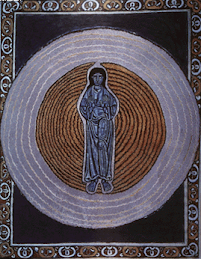Frederick Buechner was a guest lecturer at Wheaton College,
Wheaton, IL in the fall of 1985. While doing so, he attended St. Barnabas. He
later wrote about his time here:
(New York: Harper San Francisco, 1991), p. 82-86
I also found myself going to an
extraordinary church or, with my rather dim experience of churches back home,
one that was extraordinary at least to me. Its name was Saint Barnabas, and it
was located in a small town nearby called Glen Ellyn. It was described to me as
an evangelical high Episcopal church, and that seemed so wonderfully anomalous
that what took me there first was pure curiosity. What kept taking me back Sunday
after Sunday, however, was something else again. Part of the service was chanted
at Saint Barnabas, and I discovered that when a prayer or a psalm or a passage
from the Gospels is sung, you hear it in a new way. Words wear thin after a
while, especially religious words. We have spoken them and listened to them so
often that after a while we hardly even hear them anymore. As writer, preacher,
teacher I have spent so much of my life dealing with words that I find I get
fed up with them. I get fed up especially with my own words and the sound of my
own voice endlessly speaking them. What the chanting words did was to remind me
that worship is more than words and then in a way to give words back to me
again. It reminded me that words are not only meaning but music and magic and
power. The chanting italicized them, made poetry of their prose. It helped me
hear the holiness in them and in all of us as we chanted them.
. . . .
They also used incense at Saint
Barnabas. They censed the open pages of the Gospel before they read from it,
and even in the midst of a midwestern October heat wave, the church was
suddenly filled with Christmas. The hushed fragrance of it, the thin haze of
it, seemed to say that it is not just to our minds that God seeks to make
himself known, because, whatever we may think, we are much more than just our
minds, but to our sense of touch and taste too, to our seeing and hearing and
smelling the air whether it is incense that the air is laden with or burning
leaves or baking bread or honest human sweat. “O taste and see that the Lord is
good!” says the 34th Psalm, and it is not just being metaphorical.
. . . .
And I remember too that the last
time I attended a service there, there were real tears running down my cheeks
at the realization that the chances were I would probably never find myself
there again. When I got home, I thought I could not rest until I found a church
like that.
Frederick Buechner, Telling Secrets, (New York: Harper San Francisco, 1991), p. 82-86




















